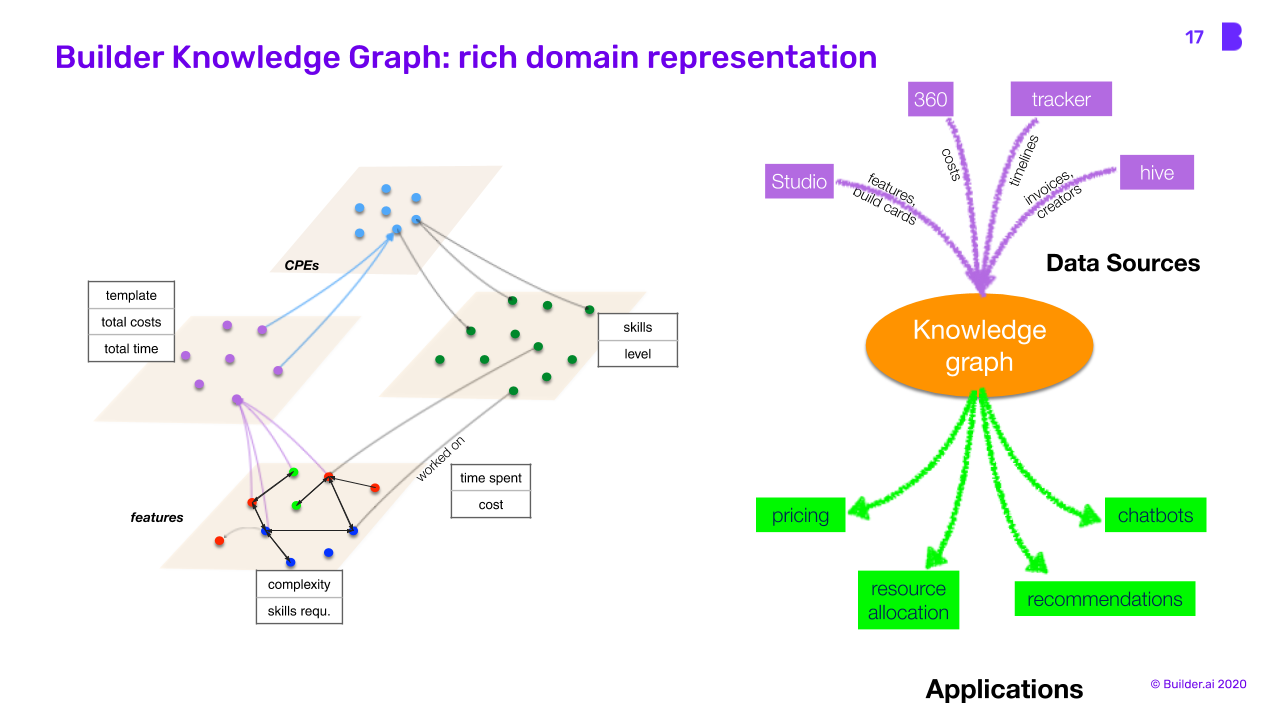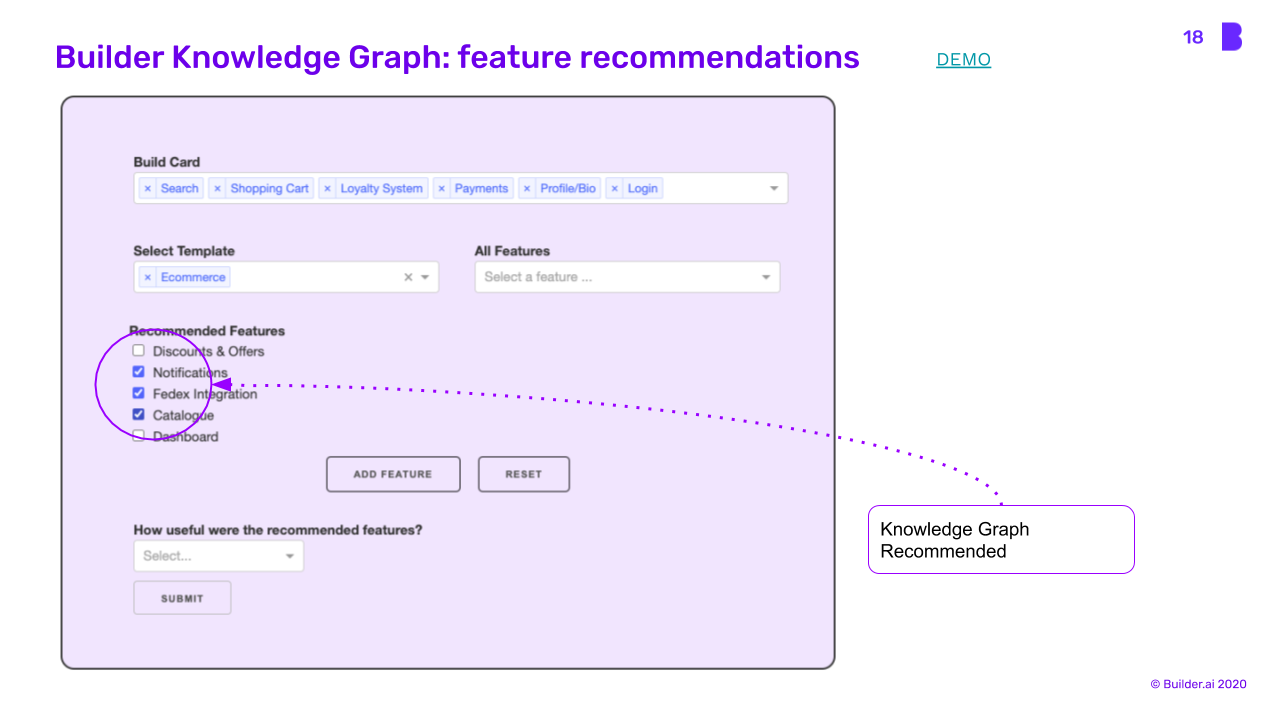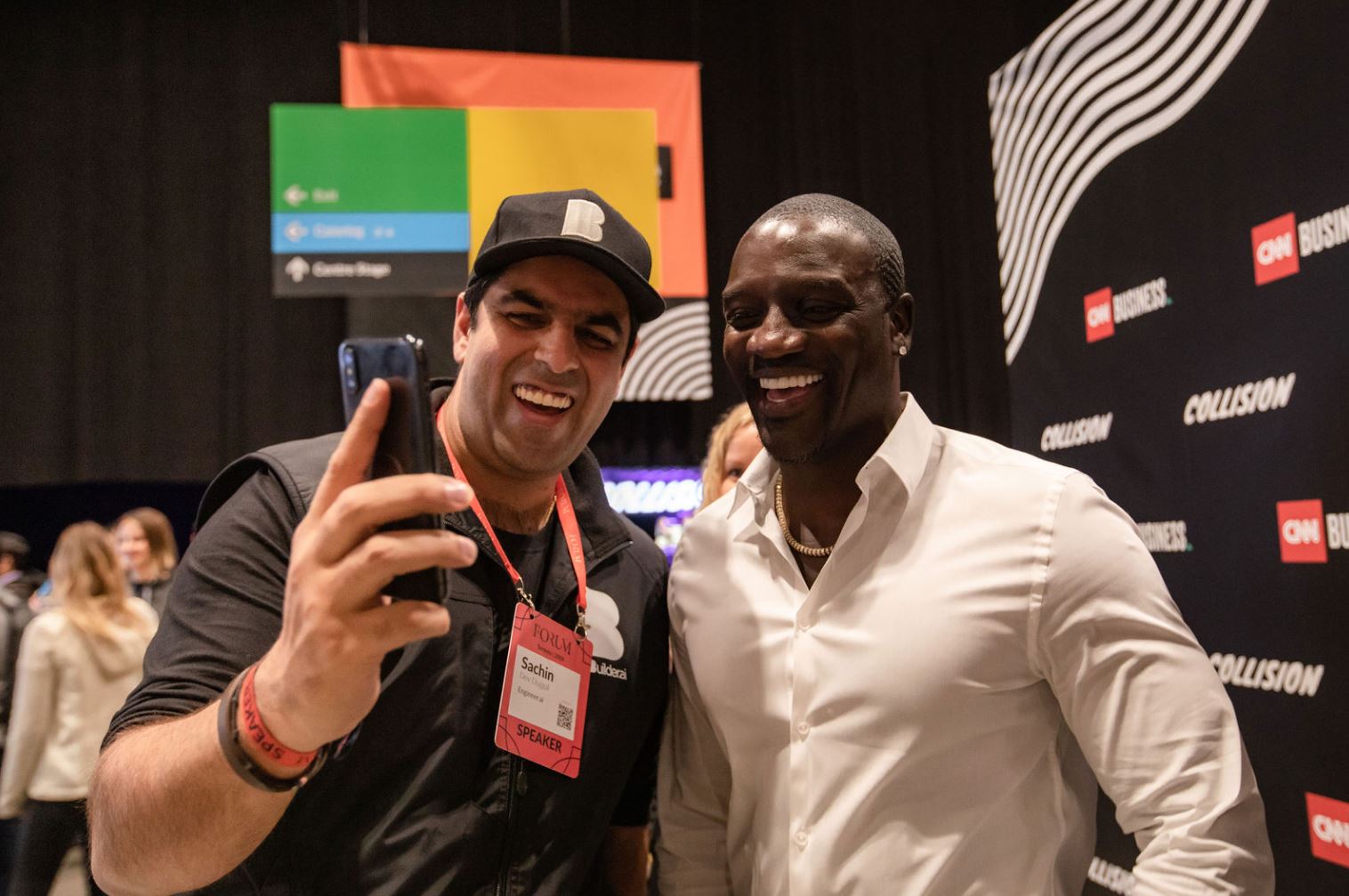Builders,
Each quarter, it gives me immense joy to offer you a glimpse into our technological advancements through our blog. The good news is that your autumn update is here!
They say technology is the great growling engine of change. Well then, I believe Builder.ai has spent these last months building the fulcrum to the future of software development. Our technology has come a long way since our last update (thanks to the great minds in our Intelligent Systems team) and we want to talk about one of our proud projects - The Knowledge Graph (KG).
But, that’s not all; more updates to follow in the coming weeks.
As a brand, we’ve been able to change the ontology of how we look at software. Our view is that software is not about projects and man hours. It is about the concept of features that form the atomic unit of software. The knowledge graph (KG) that we’ve created weaves together problem statements, features, creators and templates with thousands of data points, enabling us to price, spec and manage projects in near real-time with unparalleled transparency and consistency.

Sachin Dev Duggal, Founder and Chief Wizard says, “Our knowledge graph is basically a representation of all the entities that partake in our ecosystem and represents the rich variety of relationships between each of these entities. So, we continuously collect data from our product suite, build this complex hierarchical structure and use knowledge graph to power different applications. Every event that the platform sees, whether it’s a keystroke from a developer or the number of interactions a customer has when 5 features come together, teaches our system to predict how a project will change in the future. Our knowledge graph is the foundation upon which all of our automated and mathematical reasoning is built. For instance, take the problem of timing and pricing an app. If you went to 6 business analysts in 6 different companies, you would get 6 different prices and timelines. But by bringing this into our framework, we are able to derive a robust mathematical model, thereby achieving unprecedented consistency and programmatic efficiency.”
Let’s dig deeper.
Artificial intelligence (AI) might be one of the most abused terms of the 21st century. It is a subject that is endlessly expansive and yet intricately concentrated. But, for all of us at Builder.ai, it means being able to empower better decisions. In the AI life cycle, you start with data, you apply technology like machine learning to this data and subsequently power automated and human decisions. The knowledge graph framework is a system to drive these decisions.

The applications of AI are all around us. It is what helps Instagram detect faces to apply filters on. It is what helps Alexa recognize a voice and respond to queries intelligently.
Data to insight to intelligent decisions
Whether a customer is adding a feature into their build card, like Facebook login, we are making sure that we take that knowledge all the way through. Every single piece of information being ingested is leading to a set of questions or stories further down the line that are being learnt every single time customers use our platform. Our knowledge graph connects features with each other, connects features to templates, and templates to customer product experts such that they all have a relationship with each other. But it also connects the skillset of creators to those features, thereby creating a multidimensional view of a project.
Builder.ai has Builder Studio that allows customers to add features and choose templates, Builder 360 that manages the assembly process, Builder Tracker that allocates tasks to our network of designers and developers. We also have Builder Hive, our partner system. The output of such a wide variety of products is that everything from pricing to resource allocation and recommendations can be powered by the intelligent insights that are derived from our knowledge graph.
The future of knowledge graph
One of the projects is an event processing framework that will soon power not just our knowledge graph, but also analytics and reporting- making the Builder Brain far more dynamic.

We are also working to upgrade Natasha, the interactive assistant on Builder Studio, and soon, customers will be able to get smart feature recommendations based on user journey. There will be more technology updates coming your way soon, Builders, but in the meantime, the knowledge graph and its applications will keep evolving constantly in a way that it enhances the future of the same framework it started from.
Stories published by the editorial team at Builder.ai.












 Facebook
Facebook X
X LinkedIn
LinkedIn YouTube
YouTube Instagram
Instagram RSS
RSS


